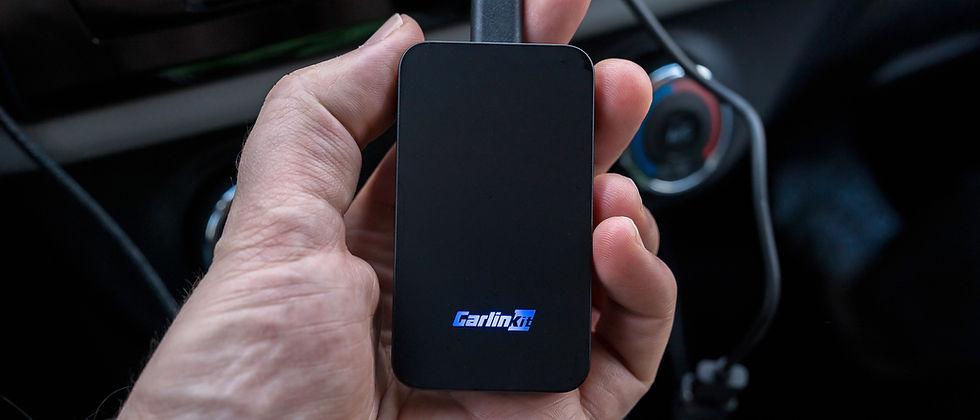How to Install a Reverse Camera in Any Car
- Danny Floyd

- Jan 29
- 3 min read
Reverse cameras aren’t just for modern motors anymore. Whether you’re driving a 2003 hatchback or a decade old saloon, adding a reverse camera can seriously improve safety, visibility, and peace of mind, especially in tight parking spaces or busy residential areas.
Good news: you don’t need to shell out for a new vehicle to get this upgrade.
In this guide, we’ll walk you through how to install a reverse camera in any car, covering both wired and wireless options. No fluff, just practical steps to get the job done.

What You’ll Need
For Wired Installations:
Reverse camera kit (with wiring loom)
Monitor or compatible head unit
Wire strippers/crimpers
Electrical tape or heat shrink tubing
Cable ties
Multimeter (optional but helpful)
Drill and screwdriver
For Wireless Installations:
Wireless reverse camera kit
Monitor or receiver unit
Electrical tape or heat shrink tubing
Basic tools (screwdrivers, trim removal tools)
Make sure the kit you buy is compatible with your vehicle’s power supply (usually 12V DC) and screen type (aftermarket head unit or standalone monitor).
Step by Step: Wired Reverse Camera Install
1. Mount the Camera
Most cameras are mounted just above the number plate or integrated into the plate light.
Use screws or the adhesive pad provided.
If drilling is required, double check there’s clearance behind the mounting point.
2. Route the Camera Cable
Feed the video and power cables through the boot lining, ideally alongside factory wiring looms.
Remove interior panels as needed using a trim tool.
Avoid routing wires near high voltage components to prevent interference.
3. Connect to Reverse Light
Your camera needs power only when the car is in reverse.
Locate your reverse light wires (often white or green).
Use a multimeter or wiring diagram to confirm.
Tap the camera’s power cable into the positive reverse light wire, and ground the negative wire to bare metal.
4. Run the Video Cable
Route the video cable from the boot to the dashboard.
Lift door sills and panels to tuck the cable safely out of sight.
Use cable ties to secure it away from pedals or moving parts.
5. Connect to Display
Plug the video cable into the back of your monitor or head unit.
If your head unit supports reverse input, enable it in the settings.
Standalone screens may mount on the dashboard or clip to the rearview mirror.
6. Test the System
Put the car in reverse (engine off, ignition on).
The camera should activate, and the screen should show a clear image.
Adjust angle and focus if necessary.
Step by Step: Wireless Reverse Camera Install
This setup skips the long video cable run.
1. Install the Camera
Same mounting process as wired.
2. Connect Camera Power
Still needs to be wired to the reverse light power and ground, just like above.
3. Install the Monitor
Plug the wireless receiver into the monitor or head unit.
Power it from a 12V source (fuse box, cigarette lighter, or direct wiring).
Some kits include a monitor that clips over the existing mirror.
4. Pair the Camera and Monitor
Follow the manufacturer’s instructions.
Some pair automatically; others need manual syncing.
Ensure there’s minimal signal interference.
5. Test and Adjust
Same process, shift into reverse and check the camera view.
Wireless video quality may vary based on distance and interference.
Tips for a Clean Install
Hide wires: Use cable sleeves or wire loom tubing for a factory finish.
Use heat shrink: Better than electrical tape for protecting joins.
Label wires: Makes future troubleshooting easier.
Check local MOT rules: In the UK, reverse cameras are legal, but make sure nothing obstructs lights or number plates.
Common Pitfalls to Avoid
Incorrect wiring: Double check polarity before connecting to the reverse light.
Signal lag (wireless): Avoid installing near Bluetooth or WiFi hotspots in the car.
Low camera position: Too low and you’ll mostly see the ground, aim for waist height if possible.
How Much Does It Cost?
Budget kits: £20 to £40 (often wireless, basic quality)
Mid range: £50 to £100 (better video quality, waterproofing, night vision)
Premium: £100+ (integrated into OEM style head units or license plate frames)
Final Thoughts
Adding a reverse camera is one of the most practical DIY upgrades you can do. Whether you're new to car modding or a seasoned enthusiast, this project balances cost, impact, and usability.
Just take your time, follow the steps, and don’t rush the wiring; your boot might not thank you, but your bumper definitely will.
Danny Floyd
Car Tech & Mods Specialist, Upgrades & Tech Column



Comments